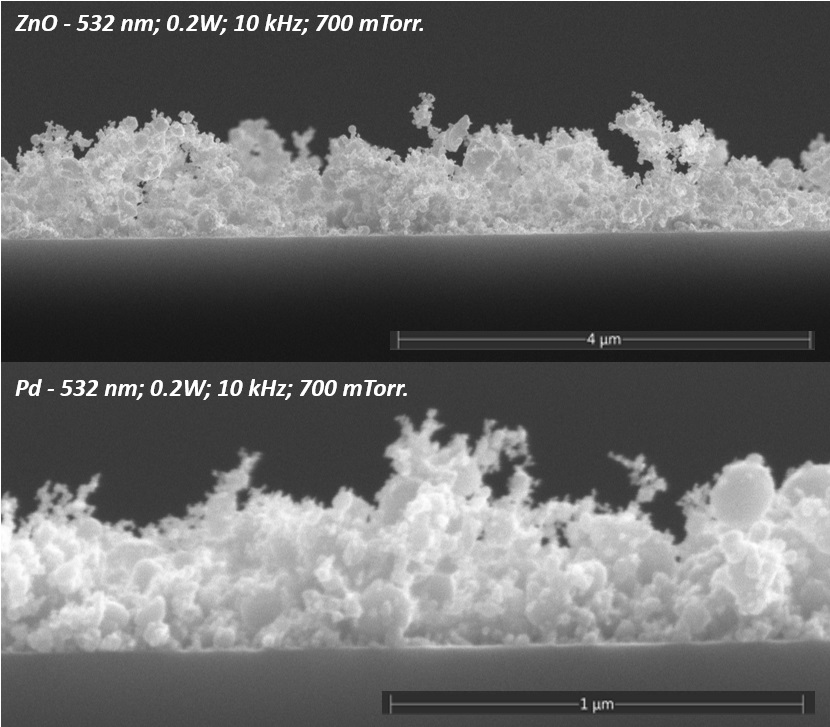Highly Sensitive Room-Temperature Surface Acoustic Wave
Hydrogen Sensors based on bilayer Nanoporous Films
 |
About Project |
|
In this project, we will design, develop and study a surface acoustic wave sensor based on a nanoporous bilayer of Pd and ZnO sensitive layers obtained using a picosecond laser, for the detection of hydrogen. The sensing mechanism of a surface acoustic wave sensor is based on the perturbation of the surface acoustic wave propagation by the changes in mass density and in electrical conductivity of the sensitive nanoporous films. This sensor will combine the advantages of a nanoporous film with those of the sensitivity of the electrical conductivity given by the bilayer structure. It is for the first time that this new configuration is proposed, with sensitive layers for SAWS applications in the form of a bilayer consisting in porous films, each having a different, independently controllable porosity. Pulsed laser deposition allows good control of film porosity. The advantage of this configuration is that using a bilayer, the limit of detection will be better because beside the effects given by changes in mass density, the effect given by the electrical conductivity is also considerable. In addition, using a porous film with a higher surface area will improve the mass sensitivity. The influence of different configurations of bilayer porous films on the wave attenuation, signal-to-noise ratio and electrical conductivity will be studied. The bilayer configuration will be optimized according to the result obtain from analysis. The sensor performance will be studied by measuring the frequency deviation at various hydrogen gas concentrations. |